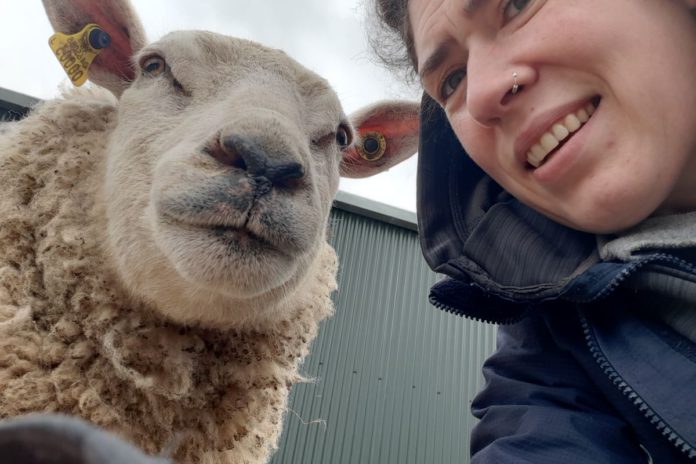In today’s Farmer’s Diary, sheep farmer, Clodagh Hughes, discusses sustainable farming and good biodiversity practices and her role in protecting nature.
Today’s lesson will be on sustainable farming and good biodiversity practices.
I would like to think that anyone reading my articles can tell I really appreciate the beautiful countryside around me and that I strive to maintain and rejuvenate the land that I am lucky enough to live on and farm.
The area where I live is a mixture of very good, productive land and land that is slightly less productive and a little harder to manage.
It is still good land, but, there are areas that are unsuitable for certain types of farming, such as tillage or dairy.
It is perfect, though, for sheep, and there are a number of reasons why sheep are suited to this environment.
- They cause less damage to the ground;
- Are brilliant grazers keeping the grasses free from many invasive weeds while, also allowing lots of wildflowers to thrive and propagate naturally. This multi-species grazing adds quality to the sheep’s diet and, improves the flavour of their meat.
There are incentives out now, within the farming community, to sow the ground with specially selected multi-species grasses and wildflowers.
This improves the grass quality in the fields and provides livestock with a more diverse and natural diet.
It is also extremely beneficial for wildlife and insects as, they can collect pollen and nip at the wildflowers. You have probably noticed the grass verges near you are being left to go wild!
Teagasc farm walk
I was at a Teagasc farm walk and talk last week. The entire focus was on improving and implementing farm biodiversity management practices.
The day included lots of useful information on evidence-based research regarding hedgerow maintenance and planting.
We met with farmers who are doing their bit for biodiversity, and a good discussion was had amongst the group.
They shed light on anything from grass quality to planting the right varieties of new hedges, leaving margins around our fields to grow wild for birds and insects to utilise and, keeping noxious and invasive weeds out of the grassland.
This was my first time attending an event the agricultural organisation hosted but, it will not be my last. Since completing my Green Cert and, joining Teagasc, I have really embraced my role as a custodian of the land.
Furthermore, I also realised, that a lot of my own farming practices are already quite ‘biodiverse friendly’.
Perhaps we, as a nation, have lost sight a little of the importance of nurturing and, ultimately protecting the fragile nature of our native countryside.
I find it very empowering that I can have a very positive impact on my farm even as an individual farmer. And it does not have to cost the earth, financially or otherwise.
So, what do I intend to do? I hear you ask…well; I’m going to plant more native Blackthorn and Whitethorn hedges and use the local supplies of organic fertilisers more.
Furthermore, I am going to ensure all watercourses are fenced off from all livestock and leave





